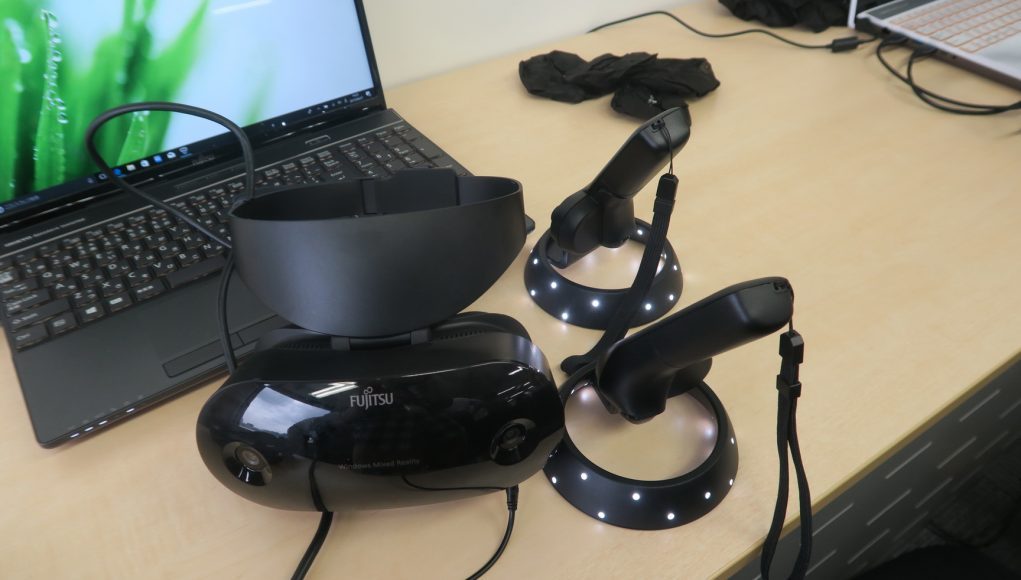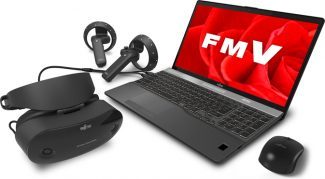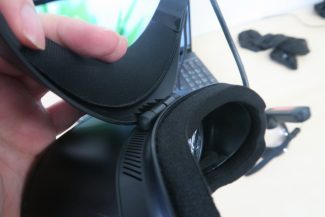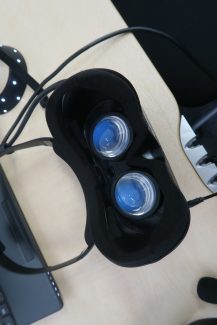It looks like Fujitsu is adding its name to the list of OEMs producing Windows “Mixed Reality” VR headsets, which currently include the likes of Acer, Asus, Dell, HP, Lenovo, and Samsung.
Fujitsu’s unnamed headset follows the same reference design as the others in the Windows headset ecosystem, which provide inside-out positional tracking and wireless, optically-tracked motion controllers—allowing the user to set up the VR system without the need of external trackers, basestations, or sensors.
Engadget Japan reports the headset includes the standard dual 2.89 inch 1440×1440 LCD panels with 90 hz refresh rate, flip-up visor and 95 degrees plus field of view. Including controllers, Fujitsu’s headset is set tentatively at a price tag of 50,000 yen, or about $440 / €370 / £330; putting it in the middle of the pack, with Acer and Lenovo’s headset + controller bundle fetching $400 at the lowest price tier, and Samsung HMD Odyssey + controller bundle with the highest price at $500.
According to Fujitsu’s press release (Japanese), the headset is expected to launch sometime in late November 2017 in Japan. It’s uncertain at this time if the headset will make it to Western markets though, as the company has only released word via Japanese outlets. Fujitsu also doesn’t officially sell its full line of consumer tech in the US or Europe, so the move to release a headset there would come as somewhat of a surprise.
If you want to know more about Windows VR headsets, Road to VR Executive Editor Ben Lang wrote a deep dive review of Acer’s headset, a mile marker of what to expect at the very least from any Windows VR headset.










